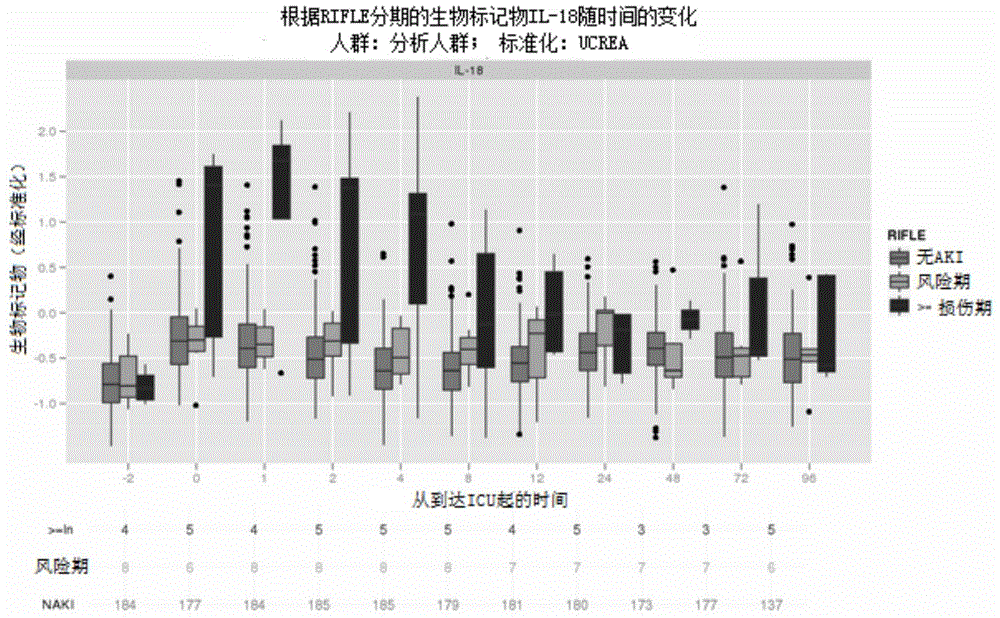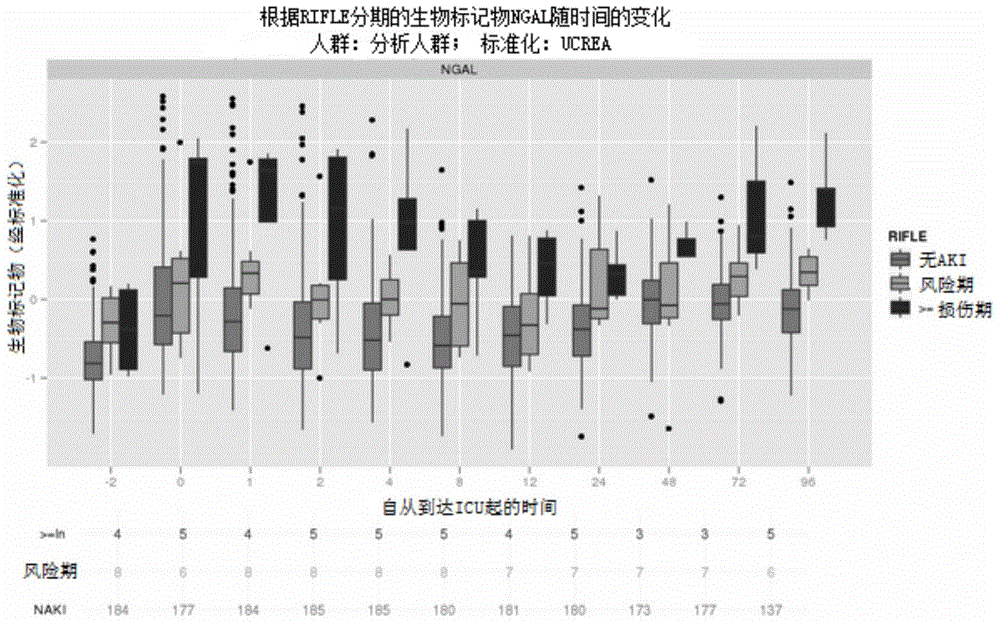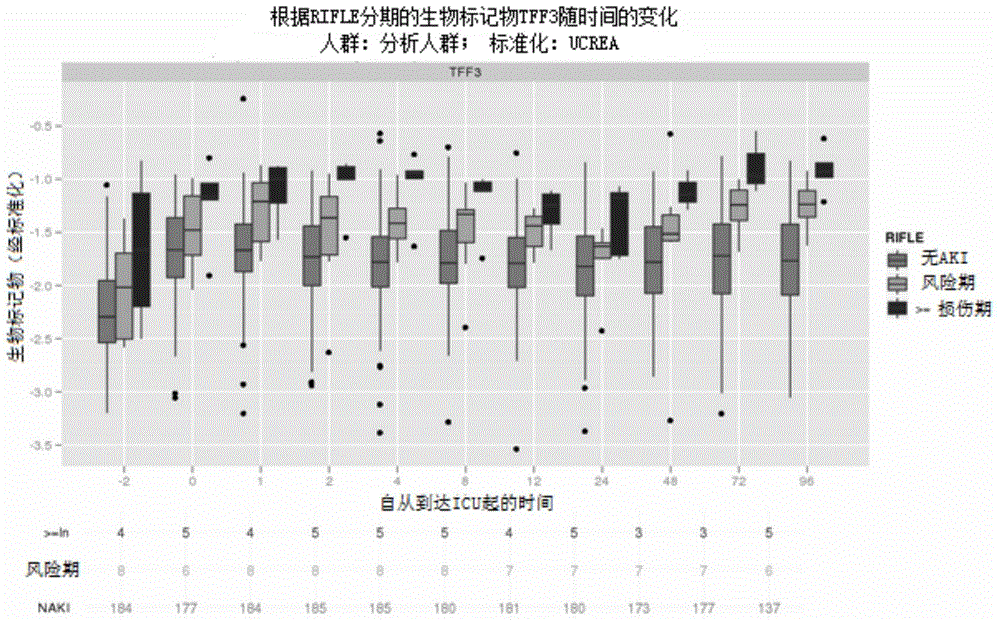Acute kidney injury
An acute kidney injury, object technology, applied in the direction of instrumentation, diagnostic recording/measurement, diagnosis, etc., can solve the problems that are not widely available
- Summary
- Abstract
- Description
- Claims
- Application Information
AI Technical Summary
Problems solved by technology
Method used
Image
Examples
Embodiment 1
[0157] Example 1: Summary of Clinical Data
[0158] Data for this analysis were collected in patients undergoing cardiopulmonary bypass surgery in an observational, prospective, exploratory study. Patients under the age of 18 or of either sex who underwent elective surgery and gave written informed consent were eligible for inclusion in the trial. Among patients enrolled in the trial, patients had to meet the following criteria to be evaluated in this analysis:
[0159] - Patient completes the study
[0160] - Obtain a baseline / screening serum creatinine value and at least two serum creatinine measurement levels over a 24 to 72 hour time window. Since serum creatinine is typically obtained only every 24 hours, we consider this criterion met for practical purposes if it is in the 12- to 84-hour time window.
[0161] - Patient has at least two urine samples collected at 1, 2, 4 or 8 hour time points
[0162] - Patient has at least one urine sample collected at 12, 24 or 48 h...
Embodiment 2
[0174] Example 2: Biomarkers and pretreatments in the study
[0175] For each biomarker, certain preprocessing steps were performed before it was used in the analysis. Due to the sensitivity of the assay used, it may occur that the marker in urine is below the limit of determination and thus no value is reported or the value is below the limit of quantification (in which case a value may be reported). In both cases, we replaced the measured value with a value equal to half the limit of quantitation for that biomarker and sample batch. The resulting measurements are referred to below as preprocessed measurements.
[0176] In the following analyses, we used this pretreatment measure along with a urine creatinine (UCREA) normalized measure. For this normalization, preprocessed measurements of urine creatinine from the same urine sample were used. This normalization was performed by dividing the pre-processed biomarker measurement of the urine by the pre-processed urine creatin...
Embodiment 3
[0179] Example 3: Univariate Evaluation Model
[0180] For each biomarker in the study, we calculated the area under the receiver operating curve (AUC) for the two binary endpoints. In the first assessment, we compared patients classified as "injury phase" or "failure phase" with patients classified as "no AKI" or "risk phase". In the second assessment, we excluded patients classified as "injury phase" or "failure phase" and compared only patients classified as "risk phase" with patients classified as "no AKI".
PUM
 Login to View More
Login to View More Abstract
Description
Claims
Application Information
 Login to View More
Login to View More - R&D
- Intellectual Property
- Life Sciences
- Materials
- Tech Scout
- Unparalleled Data Quality
- Higher Quality Content
- 60% Fewer Hallucinations
Browse by: Latest US Patents, China's latest patents, Technical Efficacy Thesaurus, Application Domain, Technology Topic, Popular Technical Reports.
© 2025 PatSnap. All rights reserved.Legal|Privacy policy|Modern Slavery Act Transparency Statement|Sitemap|About US| Contact US: help@patsnap.com



